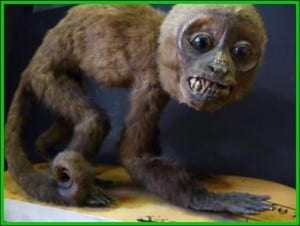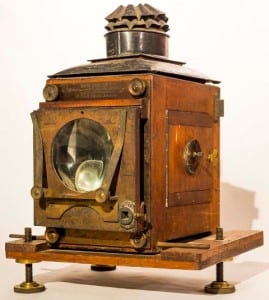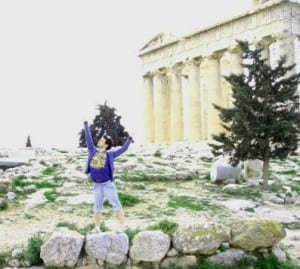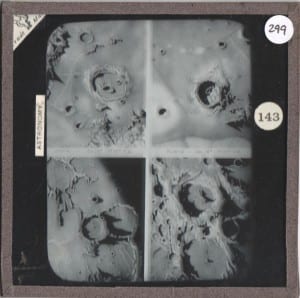Underwhelming Fossil Fish of the Month: July 2014
By Mark Carnall, on 25 July 2014
I’ll be honest with you reader, I’m totally phoning in this month’s underwhelming fossil fish of the month. When I pulled last month’s underwhelming fossil fish out of the drawer it looked to me like a small but slender mandible which I lazily attributed to the fish Saurichthys. I then wrote what I can only describe as the greatest underwhelming fossil fish of the month blog post in the world. Confidently, I scheduled it to be published and then actually looked at the specimen and re identified it as the now infamous caudal fulcrum of Chondrosteus. In a fit of shame, the dark side of science we don’t often talk about, I printed out the blog post, then shredded it and then burnt the shreds. I sent the ashes to the four corners of Earth and then deleted the original blog and rewrote one for Chondrosteus. So this month I am writing about Saurichthys but, as is always the case, the rewrite was nowhere near as interesting, engaging or downright life changing as the original lost version. Suffice to say, this is not the greatest underwhelming fossil fish of the month blog post in the world. This is just a tribute.
What remains to talk about? Human bodies on display
By Alice Stevenson, on 24 July 2014
I’ve recently returned from holiday in Cascais, near Lisbon in Portugal, which was for the most part a fairly relaxing break. For the most part. There was the small matter of a rather lengthy complaint furiously scribbled into a comments book at one particular museum we visited and my husband being subjected to an in-depth critique of ethical museum display practice – for several hours. So what got me so agitated? The display of three mummies: two Peruvian and one Egyptian in the Museu Aqueológico do Carmo, Lisbon.
A year in Show’n’Tell
By Dean W Veall, on 24 July 2014
Dean Veall here. This year we have given researchers from across UCL the chance to rummage through our drawers and delve into our cupboards as part of a brand new series of lunch time events, Show’n’Tell. The researchers had one task, to find just one object out of our 68,000 to show audiences and tell them all they know about it. Through these events we aimed to showcase the amazing research that is going on here at UCL and the passions driving some the people who work here. Some of the specimens chosen by researchers have directly related to their work whilst other have been a bit more left-field. As I get ready to host our last Show’n’Tell before the Summer break I thought it would be a good opportunity to look back on the specimens that we have had so far this year.
Specimen of the Week: Week 145
By Jack Ashby, on 21 July 2014
 Like all professional zoologists, I own several sets of novelty animal-based playing cards. One such set is “Dangerous Australian Animals”. This is a particularly good set as in addition to the usual playing card graphics (hearts, diamonds, etc), not only do you get a lovely picture of a Dangerous Australian Animal on each card, but you get a star rating, out of five, of exactly how Dangerous it is.
Like all professional zoologists, I own several sets of novelty animal-based playing cards. One such set is “Dangerous Australian Animals”. This is a particularly good set as in addition to the usual playing card graphics (hearts, diamonds, etc), not only do you get a lovely picture of a Dangerous Australian Animal on each card, but you get a star rating, out of five, of exactly how Dangerous it is.
The manufacturers would have had to work pretty hard to narrow it down to just 52 Dangerous Australian Animals, given that most lifeforms in Australia are Dangerous.
Alongside the snakes, crocodiles, spiders, jellyfish, scorpions and paralysis ticks, there is a single bird Dangerous enough to get its own card. With a Dangerous rating of 0.5 stars out of five, this week’s Specimen of the Week is… Read the rest of this entry »
Don’t ask the Archaeologist
By Edmund Connolly, on 17 July 2014
The Petrie regularly plays host to 80+ Primary School students a week who arrive at the museum armed with worksheets and pencils in various stages of consumption. During the closing Q&A’s I often worry for my teaching prowess as I endure the same question again and again from 5 or more little upturned faces, wondering what have I done wrong, why aren’t they remembering anything?
Squirrels and Earth Resistance
By Pia K Edqvist, on 17 July 2014
The past couple of days people have found me in all sorts of random places: popping up from under tables, looking in cupboards and spying behind display cases. Initially we thought we were looking for a squirrel; thinking we would be finding a bionic-like animal with fluorescent eyes (pretty exciting). But in the end we realised that this ‘squirrel’ was actually the environmental monitoring box. This ‘squirrel’ was among many items that had to be located, but why?
Excitingly enough, I have been supervising the Portable Appliance Testing (PAT testing) executed in the Grant Museum and the Petrie Museum. This test is used to check whether a portable/moveable electrical item is safe to use. As we do not have the expertise in-house to execute this kind of testing we had to search for help elsewhere. Fortunately assistance was not far away; this could be found within the department among the staff at the Bloomsbury Theatre. Theatre Technician Jo Howcroft came to the rescue bringing her expertise within the area. She also kindly explained the process of PAT testing (which is more complicated than one would ever imagine):
Work Experience at UCL Art Museum
By Martine Rouleau, on 14 July 2014
This blog was written by Ellie who is in year 10 at Kingsmead School. She was on work experience at UCL for a week between 7th-11th July. She spent a day shadowing Dr Martine Rouleau, Learning and Access Officer at UCL Art Museum.
 As I’m on work experience here, I didn’t know anything about UCL Art Museum. I’ve been here for 2 days and I now know a lot of information about the history and collections at the art museum.
As I’m on work experience here, I didn’t know anything about UCL Art Museum. I’ve been here for 2 days and I now know a lot of information about the history and collections at the art museum.
I’ve learnt that there are over 10,000 pieces of art here created by a variety of artists, some that are very well known and some that aren’t. They’re very different and they all have different meanings and explanations of why they were produced. However, they have one thing in common and that is being under the same roof.
UCL has the artwork of Turner, de Wint, Cox and Rowlandson. They also have work by students that have won competitions such as best art work in their year at University (the William Coldstream Memorial Prize).
Specimen of the Week: Week 144
By Mark Carnall, on 14 July 2014
 Are you settled to read the 144th weekly specimen from the Grant Museum? This week I continue my personal mission to highlight the more obscure, complex and confusing animals. From a very early age our exposure to the animal kingdom is focused on the cute, charismatic and large animals, what we call ‘Hollywood animals‘ here at the Grant Museum. They adorn lunch boxes, T-shirts and fill zoos but the sheer diversity of animal life is so much richer. Why is it that we can all recognise and name specific mammals but lump other huge animal groups under one name- crabs, frogs, spiders etc. Despite the fact that mammal species are but a tiny proportion of all animal species, around 5000 or so out of an estimated 1.5 million described species. It might be that we’re psychologically geared to remembering animals that are like us or perhaps it’s part of our brain wiring to remember animals that can stomp/eat/maul us. Either way, this week’s specimen is one that I’m fairly confident will be new to many of you.
Are you settled to read the 144th weekly specimen from the Grant Museum? This week I continue my personal mission to highlight the more obscure, complex and confusing animals. From a very early age our exposure to the animal kingdom is focused on the cute, charismatic and large animals, what we call ‘Hollywood animals‘ here at the Grant Museum. They adorn lunch boxes, T-shirts and fill zoos but the sheer diversity of animal life is so much richer. Why is it that we can all recognise and name specific mammals but lump other huge animal groups under one name- crabs, frogs, spiders etc. Despite the fact that mammal species are but a tiny proportion of all animal species, around 5000 or so out of an estimated 1.5 million described species. It might be that we’re psychologically geared to remembering animals that are like us or perhaps it’s part of our brain wiring to remember animals that can stomp/eat/maul us. Either way, this week’s specimen is one that I’m fairly confident will be new to many of you.
Prepare to be amazed, this week’s specimen of the week is…
Read the rest of this entry »
Unpacking UCL’s Magic Lantern Slide Collections
By uclqmbr, on 9 July 2014
The UCL Grant Museum and the Science and Engineering Collections currently have several thousand magic lantern slides that relate to subjects as diverse as telegraphy, astronomy or Australian coral reefs; but which for the most part have been consigned to gathering dust in splintering wooden boxes. I, however, have spent the last few weeks sorting, auditing and cleaning hundreds of these slides, and I am now rather well acquainted with these little glass squares.

Example of a 19th century magic lantern slide projector from the UCL physics collection. This example was used as a sort of overhead projector but others were designed to project across a lecture theatre or hall
Magic lanterns were first developed in the 17th century as one of the earliest image projectors. While the device itself has evolved, the concept has remained the same: A combination of lenses and a light source are used to enlarge the images found on glass slides (each about the size of a Post-it) and project them onto a wall or screen. Magic lantern slides, hence, can be described as a kind of ancestor to the Kodachrome slides used in slide projectors, or even present-day PowerPoint slides. Read the rest of this entry »
To Display or not to display?
By tcrnjmf, on 8 July 2014
While undertaking my Museum Studies Masters at UCL this year, common themes that kept cropping up were the issues that arise when displaying certain subjects or indeed objects. During our Museums: A Critical Perspective class we covered ethnographic collections, ‘Dark Tourism’ and national memory and the debate over displaying human remains. With my interests lying with the history of science and medicine I wanted to find a topic I could sink my teeth into whilst also focusing on museums of science and their methods of display.

Brown Dog Statue, 1906 with the plaque reading:
“Men and Women of England, how long shall these things be?”
In April a UCL Science Collections curator asked me if I would be interested in taking a look at a 1930s dog respirator as a starting point for a dissertation topic. I was informed that the object may have been used during animal experimentation and there were concerns about how to display it responsibly, considering its historic role in experiments to which so many have a negative responses. I researched the history of vivisection – live animal dissection – and discovered the story of the little brown dog. During the early 1900s protests and riots spread through London as anti-vivisectionists campaigned against experimentation on animals in response to the illegal dissection of a little brown dog. Anti-vivisectionists commissioned a bronze statue of the dog to be erected as a memorial, antagonising medical students or “anti-doggers” and resulting in the statue being removed under the cover of darkness. In 1985 another statue, commissioned by the National Anti-Vivisection Society, was erected in Battersea Park and remains there today. Read the rest of this entry »
 Close
Close





